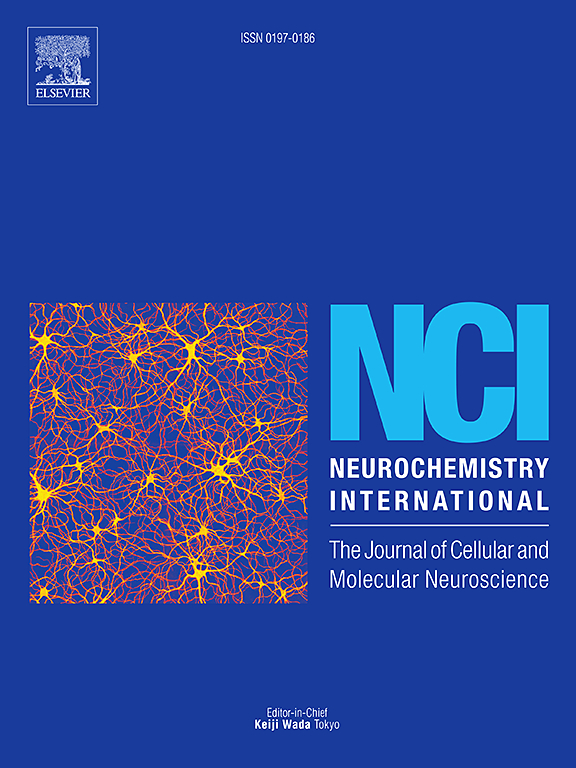Eslicarbazepine, a third-generation anti-seizure medication, inhibits INa but stimulates IK(M)
IF 4
3区 医学
Q2 BIOCHEMISTRY & MOLECULAR BIOLOGY
引用次数: 0
Abstract
Eslicarbazepine (ESL) is a new antiseizure medication used to treat focal epilepsy. It is not entirely clear how ESL affects the magnitude and gating kinetics of membrane ionic currents, although a few reports have demonstrated its ability to suppress voltage-gated Na+ currents (INa). With the aid of patch clamp technology, docking prediction, and simulation modeling, this study was conducted to investigate the potential modifications through which ESL may induce on ionic currents, including INa, M-type K+ current (IK(M)), and erg-mediated K+ current (IK(erg)), in hippocampal neurons. ESL distinctly inhibited transient INa (INa(T)) and late INa (INa(L)), demonstrating greater potency against INa(L). ESL shifted the steady-state inactivation curve of INa(T) leftward without altering its steepness or activation curve. Additionally, ESL attenuated the tefluthrin-induced enhancement of voltage-dependent hysteresis (Hys(V)) of persistent INa (INa(P)).
ESL increased IK(M) in a concentration-dependent manner, shifting its steady-state activation curve toward more depolarized potentials and enhancing Hys(V) strength. It also increased the activity and mean open time of IK(M) without affecting single-channel conductance. Minimal changes were observed in the magnitude of IK(erg). Predicted docking analysis revealed that ESL binds to the hNaV1.7 channel via hydrogen bonds and hydrophobic contacts. Simulation modeling using hippocampal CA1 pyramidal neurons demonstrated that ESL's inhibition of INa and stimulation of IK(M), along with changes in their Hys(V), modulate neuronal action potential firing. Overall, these findings highlight ESL's dual effects on INa and IK(M), revealing mechanisms that likely contribute to its efficacy in treatment of epilepsy.

埃斯卡巴西平,第三代抗癫痫药物,抑制INa但刺激IK(M)。
埃斯卡巴西平(ESL)是一种用于治疗局灶性癫痫的新型抗癫痫药物。目前还不完全清楚ESL如何影响膜离子电流的大小和门控动力学,尽管一些报道已经证明它能够抑制电压门控Na+电流(INa)。借助膜片钳技术、对接预测和仿真建模,本研究探讨了ESL对海马神经元中离子电流(包括INa、M型K+电流(IK(M))和ergg介导的K+电流(IK(erg))的潜在影响。ESL明显抑制瞬态INa(INa(T))和晚期INa(INa(L)),对INa(L)的抑制作用更强。ESL使INa(T)的稳态失活曲线左移,但没有改变其陡度和激活曲线。此外,ESL减弱了氟氯菊酯诱导的持续INa(INa(P))的电压依赖性滞后(Hys(V))增强。ESL以浓度依赖的方式增加IK(M),使其稳态激活曲线向更多的去极化电位移动,并增强Hys(V)强度。在不影响单通道电导的情况下,增加了IK(M)的活性和平均打开时间。IK的大小(erg)变化最小。预测对接分析表明,ESL通过氢键和疏水接触与hNaV1.7通道结合。海马CA1锥体神经元模拟模型表明,ESL对INa的抑制和IK(M)的刺激,以及Hys(V)的改变,可以调节神经元的动作电位放电。总的来说,这些发现强调了ESL对INa和IK(M)的双重作用,揭示了可能有助于其治疗癫痫疗效的机制。
本文章由计算机程序翻译,如有差异,请以英文原文为准。
求助全文
约1分钟内获得全文
求助全文
来源期刊

Neurochemistry international
医学-神经科学
CiteScore
8.40
自引率
2.40%
发文量
128
审稿时长
37 days
期刊介绍:
Neurochemistry International is devoted to the rapid publication of outstanding original articles and timely reviews in neurochemistry. Manuscripts on a broad range of topics will be considered, including molecular and cellular neurochemistry, neuropharmacology and genetic aspects of CNS function, neuroimmunology, metabolism as well as the neurochemistry of neurological and psychiatric disorders of the CNS.
 求助内容:
求助内容: 应助结果提醒方式:
应助结果提醒方式:


